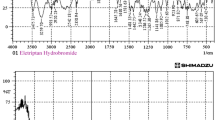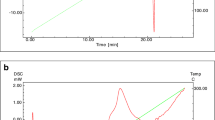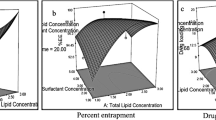Abstract
Nimodipine (NMD) is a 1,4-dihydropyridine calcium antagonist that is effective in the prevention and treatment of cerebral arterial vasospasm and cerebral ischemic injury caused by subarachnoid hemorrhage. Since the drug itself is highly insoluble in water and has low oral bioavailability, while injectable formulations may cause pain and inflammation, the blood–brain barrier (BBB) prevents the effective delivery of therapeutic agents to the brain tissue. Therefore, in the present study, NMD liposomes were prepared by ethanol injection and innovatively lyophilised and loaded into temperature-sensitive in situ gels for intranasal administration as sprays to deliver drugs to brain tissues bypassing the blood–brain barrier. The optimal gel formulation was obtained by screening in which liposomes were divided into lecithin, cholesterol, and NMD in the ratio of 40:10: 1; Pluronic P407, Pluronic P188, Tween 80, polyvinyl ketone and ethyl nipagin in the ratio of (180:20:3:1:1); Pluronic P407, Pluronic P188, Tween 80, polyvinyl ketone, and ethyl nipagin in the ratio of (180:20:3:1:1). The prepared flow gel can form a solidified gel after a temperature of 31.07–32.07°C and a time of 58.51–59.89 s. Meanwhile, the NMD liposome gel formulation achieved sustained release over 56 h. The pharmacokinetic results of the developed NMD liposomal temperature-sensitive in situ gel and NMD temperature-sensitive in situ gel showed that liposomal nasal mucosal in situ gel is a more effective brain-targeted drug delivery system for NMD.
Graphical Abstract










Similar content being viewed by others
Data Availability
Data will be made available on request.
References
Yang W, Luo H, Ma Y, Si S, Zhao H. Effects of antihypertensive drugs on cognitive function in elderly patients with hypertension: a review. Aging Dis. 2021;12(3):841–51. https://doi.org/10.14336/AD.2020.1111.
Guo S, Li Y, Wei B, Liu W, Li R, Cheng W, et al. Tim-3 deteriorates neuroinflammatory and neurocyte apoptosis after subarachnoid hemorrhage through the Nrf2/HMGB1 signaling pathway in rats. Aging. 2020;12(21):21161–85. https://doi.org/10.18632/aging.103796.
Fu Q, Sun J, Ai X, Zhang P, Li M, Wang Y, et al. Nimodipine nanocrystals for oral bioavailability improvement: role of mesenteric lymph transport in the oral absorption. Int J Pharm. 2013;448(1):290–7. https://doi.org/10.1016/j.ijpharm.2013.01.065.
Hassan N, Ali M, Ali J. Development and evaluation of novel buccoadhesive wafers of nimodipine for treatment of hypertension. Drug Delivery. 2010;17(2):59–67. https://doi.org/10.3109/10717540903508987.
Ugwoke MI, Agu RU, Verbeke N, Kinget R. Nasal mucoadhesive drug delivery: background, applications, trends and future perspectives. Adv Drug Deliv Rev. 2005;57(11):1640–65. https://doi.org/10.1016/j.addr.2005.07.009.
Ugwoke MI, Verbeke N, Kinget R. The biopharmaceutical aspects of nasal mucoadhesive drug delivery. J Pharm Pharmacol. 2001;53(1):3–21. https://doi.org/10.1211/0022357011775145.
Chelladurai S, Mishra M, Mishra B. Design and evaluation of bioadhesive in-situ nasal gel of ketorolac tromethamine. Chem Pharm Bull (Tokyo). 2008;56(11):1596–9. https://doi.org/10.1248/cpb.56.1596.
Uppuluri CT, Ravi PR, Dalvi AV. Design, optimization and pharmacokinetic evaluation of Piribedil loaded solid lipid nanoparticles dispersed in nasal in situ gelling system for effective management of Parkinson’s disease. Int J Pharm. 2021;606: 120881. https://doi.org/10.1016/j.ijpharm.2021.120881.
Youssef NAHA, Kassem AA, Farid RM, Ismail FA, El-Massik MAE, Boraie NA. A novel nasal almotriptan loaded solid lipid nanoparticles in mucoadhesive in situ gel formulation for brain targeting: Preparation, characterization and in vivo evaluation. Int J Pharm. 2018;548(1):609–24. https://doi.org/10.1016/j.ijpharm.2018.07.014.
Hosny KM, Hassan AH. Intranasal in situ gel loaded with saquinavir mesylate nanosized microemulsion: preparation, characterization, and in vivo evaluation. Int J Pharm. 2014;475(1–2):191–7. https://doi.org/10.1016/j.ijpharm.2014.08.064.
Kadri R, Bacharouch J, Elkhoury K, Ben Messaoud G, Kahn C, Desobry S, et al. Role of active nanoliposomes in the surface and bulk mechanical properties of hybrid hydrogels. Mater Today Bio. 2020;6: 100046. https://doi.org/10.1016/j.mtbio.2020.100046.
Catoira MC, Fusaro L, Di Francesco D, Ramella M, Boccafoschi F. Overview of natural hydrogels for regenerative medicine applications. J Mater Sci Mater Med. 2019;30(10):115. https://doi.org/10.1007/s10856-019-6318-7.
Elkhoury K, Russell CS, Sanchez-Gonzalez L, Mostafavi A, Williams TJ, Kahn C, et al. Soft-nanoparticle functionalization of natural hydrogels for tissue engineering applications. Adv Healthc Mater. 2019;8(18): e1900506. https://doi.org/10.1002/adhm.201900506.
Stephanopoulos N, Ortony JH, Stupp SI. Self-assembly for the synthesis of functional biomaterials. Acta Mater. 2013;61(3):912–30. https://doi.org/10.1016/j.actamat.2012.10.046.
Boateng JS, Matthews KH, Stevens HN, Eccleston GM. Wound healing dressings and drug delivery systems: a review. J Pharm Sci. 2008;97(8):2892–923. https://doi.org/10.1002/jps.21210.
Drury JL, Mooney DJ. Hydrogels for tissue engineering: scaffold design variables and applications. Biomaterials. 2003;24(24):4337–51. https://doi.org/10.1016/s0142-9612(03)00340-5.
Ahmed TA, Badr-Eldin SM, Ahmed OA, Aldawsari H. Intranasal optimized solid lipid nanoparticles loaded in situ gel for enhancing trans-mucosal delivery of simvastatin. J DRUG DELIV SCI TEC. 2018;48:499–508.
Mura P, Mennini N, Nativi C, Richichi B. In situ mucoadhesive-thermosensitive liposomal gel as a novel vehicle for nasal extended delivery of opiorphin. Eur J Pharm Biopharm. 2018;122:54–61. https://doi.org/10.1016/j.ejpb.2017.10.008.
Hosny KM, Hassan AH. Intranasal in situ gel loaded with saquinavir mesylate nanosized microemulsion: preparation, characterization, and in vivo evaluation. Int J Pharm. 2014;475(1–2):191–7. https://doi.org/10.1016/j.ijpharm.2014.08.064.
Zhuang J, Holay M, Park JH, Fang RH, Zhang J, Zhang L. Nanoparticle delivery of immunostimulatory agents for cancer immunotherapy. Theranostics. 2019;9(25):7826–48. https://doi.org/10.7150/thno.37216.
Kanamala M, Wilson WR, Yang M, Palmer BD, Wu Z. Mechanisms and biomaterials in pH-responsive tumour targeted drug delivery: a review. Biomaterials. 2016;85:152–67. https://doi.org/10.1016/j.biomaterials.2016.01.061.
Kang T, Tran TTT, Park C, Lee BJ. Biomimetic shear stress and nanoparticulate drug delivery. J PHARM. 2017;47(2):133–9.
Choi YH, Han HK. Nanomedicines: current status and future perspectives in aspect of drug delivery and pharmacokinetics [published correction appears in J Pharm Investig. 2019;49(1):201]. J Pharm Investig. 2018;48(1):43–60. https://doi.org/10.1007/s40005-017-0370-4.
Han SM, Na YG, Lee HS, Son GH, Jeon SH, Bang KH, et al. Improvement of cellular uptake of hydrophilic molecule, calcein, formulated by liposome. J Pharm. 2018;48(5):595–601.
Spuch C, Navarro C. Liposomes for targeted delivery of active agents against neurodegenerative diseases (Alzheimer’s disease and Parkinson’s disease). J Drug Deliv. 2011;2011: 469679. https://doi.org/10.1155/2011/469679.
Park O, Yu G, Jung H, Mok H. Recent studies on micro-/nano-sized biomaterials for cancer immunotherapy. J Pharm. 2017;47(1):11–8.
Hoang NH, Lim C, Sim T, Oh KT. Triblock copolymers for nano-sized drug delivery systems. J Pharm. 2017;47(1):27–35.
Gupta B, Yong CS, Kim JO. Solid matrix-based lipid nanoplatforms as carriers for combinational therapeutics in cancer. J Pharm. 2017;47(6):461–73.
Muntimadugu E, Dhommati R, Jain A, Challa VG, Shaheen M, Khan W. Intranasal delivery of nanoparticle encapsulated tarenflurbil: a potential brain targeting strategy for Alzheimer’s disease. Eur J Pharm Sci. 2016;92:224–34. https://doi.org/10.1016/j.ejps.2016.05.012.
Nour SA, Abdelmalak NS, Naguib MJ, Rashed HM, Ibrahim AB. Intranasal brain-targeted clonazepam polymeric micelles for immediate control of status epilepticus: in vitro optimization, ex vivo determination of cytotoxicity, in vivo biodistribution and pharmacodynamics studies. Drug Deliv. 2016;23(9):3681–95. https://doi.org/10.1080/10717544.2016.1223216.
Jain R, Nabar S, Dandekar P, Patravale V. Micellar nanocarriers: potential nose-to-brain delivery of zolmitriptan as novel migraine therapy. Pharm Res. 2010;27(4):655–64. https://doi.org/10.1007/s11095-009-0041-x.
Pokharkar V, Patil-Gadhe A, Kaur G. Physicochemical and pharmacokinetic evaluation of rosuvastatin loaded nanostructured lipid carriers: influence of long- and medium-chain fatty acid mixture. Pharm Investig. 2018;48:465–76.
Singh SK, Dadhania P, Vuddanda PR, Jain A, Velaga S, Singh S. Intranasal delivery of asenapine loaded nanostructured lipid carriers: formulation, characterization, pharmacokinetic and behavioural assessment. RSC Adv. 2016;6(3):2032–45.
Kim HS, Lee DY. Photothermal therapy with gold nanoparticles as an anticancer medication. J Pharm. 2017;47(1):19–26.
Costa C, Moreira JN, Amaral MH, Sousa Lobo JM, Silva AC. Nose-to-brain delivery of lipid-based nanosystems for epileptic seizures and anxiety crisis. J Control Release. 2019;295:187–200. https://doi.org/10.1016/j.jconrel.2018.12.049.
Kapoor M, Cloyd JC, Siegel RA. A review of intranasal formulations for the treatment of seizure emergencies. J Control Release. 2016;237:147–59. https://doi.org/10.1016/j.jconrel.2016.07.001.
Kumar A, Pandey AN, Jain SK. Nasal-nanotechnology: revolution for efficient therapeutics delivery. Drug Deliv. 2016;23(3):681–93. https://doi.org/10.3109/10717544.2014.920431.
Feng Y, He H, Li F, Lu Y, Qi J, Wu W. An update on the role of nanovehicles in nose-to-brain drug delivery. Drug Discov Today. 2018;23(5):1079–88. https://doi.org/10.1016/j.drudis.2018.01.005.
Lungare S, Hallam K, Badhan RK. Phytochemical-loaded mesoporous silica nanoparticles for nose-to-brain olfactory drug delivery. Int J Pharm. 2016;513(1–2):280–93. https://doi.org/10.1016/j.ijpharm.2016.09.042.
Chai Q, Jiao Y, Yu X. Hydrogels for biomedical applications: their characteristics and the mechanisms behind them. Gels. 2017;3(1):6. https://doi.org/10.3390/gels3010006.
Agrawal M, Ajazuddin, Tripathi DK, et al. Recent advancements in liposomes targeting strategies to cross blood-brain barrier (BBB) for the treatment of Alzheimer’s disease. J Control Release. 2017;260:61–77. https://doi.org/10.1016/j.jconrel.2017.05.019.
Vieira DB, Gamarra LF. Getting into the brain: liposome-based strategies for effective drug delivery across the blood-brain barrier. Int J Nanomedicine. 2016;11:5381–414. https://doi.org/10.2147/IJN.S117210.
Guan T, Miao Y, Xu L, Yang S, Wang J, He H, et al. Injectable nimodipine-loaded nanoliposomes: preparation, lyophilization and characteristics. Int J Pharm. 2011;410(1–2):180–7. https://doi.org/10.1016/j.ijpharm.2011.03.009.
Pople PV, Singh KK. Targeting tacrolimus to deeper layers of skin with improved safety for treatment of atopic dermatitis. Int J Pharm. 2010;398(1–2):165–78. https://doi.org/10.1016/j.ijpharm.2010.07.008.
Abd Elhady SS, Mortada ND, Awad GA, Zaki NM. Development of in situ gelling and muco adhesive mebeverine hydrochloride solution for rectal administration. Saudi Pharm J. 2003;11.
Vanaja K, Zare M, Basavaraju B, Salwa S, Murthy SN, Shivakumar HN. Thermosensitive in situ liposomal gels loaded with antimicrobial agent for oral care in critically ill patients. Ther Deliv. 2020;11(4):231–43. https://doi.org/10.4155/tde-2019-0092.
Ozbay I, Kucur C, Değer A, Ital I, Kasim CM, Oghan F. Cytotoxic effects of intranasal midazolam on nasal mucosal tissue. J Craniofac Surg. 2015;26(6):2008–12. https://doi.org/10.1097/SCS.0000000000001965.
Sherje AP, Londhe V. Development and evaluation of pH-responsive cyclodextrin-based in situ gel of paliperidone for intranasal delivery. AAPS PharmSciTech. 2018;19(1):384–94. https://doi.org/10.1208/s12249-017-0844-8.
Shah D, Guo Y, Ban I, Shao J. Intranasal delivery of insulin by self-emulsified nanoemulsion system: In vitro and in vivo studies. Int J Pharm. 2022;616:121565. https://doi.org/10.1016/j.ijpharm.2022.121565.
Macdonald RL, Hänggi D, Strange P, Steiger HJ, Mocco J, Miller M, et al. Nimodipine pharmacokinetics after intraventricular injection of sustained-release nimodipine for subarachnoid hemorrhage [published online ahead of print, 2019 Dec 6]. J Neurosurg. 2019;1–7. https://doi.org/10.3171/2019.9.JNS191366.
de la Monte SM. Intranasal insulin therapy for cognitive impairment and neurodegeneration: current state of the art. Expert Opin Drug Deliv. 2013;10(12):1699–709. https://doi.org/10.1517/17425247.2013.856877.
De Rosa R, Garcia AA, Braschi C, et al. Intranasal administration of nerve growth factor (NGF) rescues recognition memory deficits in AD11 anti-NGF transgenic mice. Proc Natl Acad Sci U S A. 2005;102(10):3811–6. https://doi.org/10.1073/pnas.0500195102.
Funding
This study was supported by the Natural Science Fund Project of Science and Technology Department of Jilin Province (No. YDZJ202301ZYTS141) and Key R&D Project of Jilin Province Science and Technology Development Plan of China (No. 20210204166YY).
Author information
Authors and Affiliations
Contributions
Lin Ma, Heying Mao, Jing Xu, Mingguan Piao, and Jingshu Piao designed the study, carried out statistical analysis, drafted, and revised the manuscript. Lin Ma participated in the whole study. All authors read and approved the final manuscript.
Corresponding authors
Ethics declarations
Competing Interests
The authors declare no competing interests.
Additional information
Publisher's Note
Springer Nature remains neutral with regard to jurisdictional claims in published maps and institutional affiliations.
Rights and permissions
Springer Nature or its licensor (e.g. a society or other partner) holds exclusive rights to this article under a publishing agreement with the author(s) or other rightsholder(s); author self-archiving of the accepted manuscript version of this article is solely governed by the terms of such publishing agreement and applicable law.
About this article
Cite this article
Ma, L., Mao, H., Xu, J. et al. Study on the Nasal Drug Delivery System of NMD Liposomes In Situ Thermosensitive Gel. AAPS PharmSciTech 24, 234 (2023). https://doi.org/10.1208/s12249-023-02679-5
Received:
Accepted:
Published:
DOI: https://doi.org/10.1208/s12249-023-02679-5




